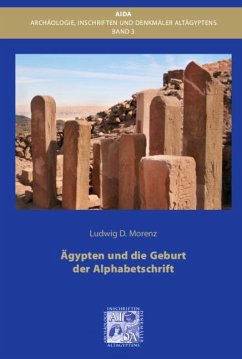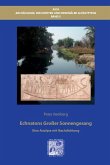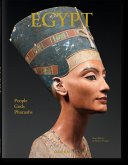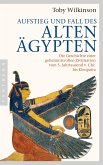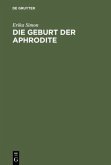Hieroglyphen und Keilschrift sind über 5.000 Jahre alt, die erste Alphabetschrift, das Proto-Sinaitisch, entstand erst nach 2.000 v.Chr. im Südwestsinai um Serabit el-Chadim im Spannungsfeld zwischen Ägyptern und Kanaanäern. Auf Vorwort und Einleitung folgt eine Kurzcharakterisierung der vier diskutierten Schriftsysteme des 2. Jt. sowie ein Abschnitt dazu, daß es sich um eine lautschriftliche Alphabetschrift und zugleich ein graphisches System kultureller Identität handele. Als nächstes wird das Gebiet von Serabit el-Chadim als kulturelle Kontaktzone samt Hathortempel und besonderer Vertragsszene vorgestellt. Der Hauptteil des Bandes widmet sich Thesen zur Genese der Alphabetschrift, darunter u. a. den Aspekten von Zweisprachigkeit, Sprachbestimmung, Bedeutung von Namen, Zeichenübernahme, Verhältnis Bild-Schrift, Varianz und Normierung von Zeichen, Buchstabennamen und Buchstabenreihenfolge. Die Untersuchung schließt mit Abschnitten zu Archäologie und kultureller Wichtigkeit der Tempelwerkstatt von Serabit, dem Inschriftentableau am nahegelegenenen Gebel Lihyan mit hieroglyphischen und bildhaft-kanaanäischen Texten sowie Ausblick, Glossar und Literaturliste. Hieroglyphs and cuneiform writing are more than 5,000 years old, while the first alphabetic writing called Proto-Sinaitic originated only after 2,000 B.C. in the south-western Sinai around Serabit el-Chadim between the poles of Egypt and Canaan. Foreword and introduction are followed by a short characterisation of the four discussed systems of writing of the 2nd millenium B.C. and a section on the fact that they are both a method of phonetic spelling and a graphical system of cultural identity. The next chapter deals with the area of Serabit el-Chadim as a zone of cultural contact, its temple of Hathor, and a special treaty scene. The main section of the book deals with hypotheses on the genesis of alphabetic writing, e. g. the aspects of bilingualism, determination of language, significance of names, adoption of signs, relationship image-text, variance and standardisation of signs, names and order of letters. The study ends with chapters on the archaeological remains and cultural significance of the temple workshop at Serabit, the inscribed stele at nearby Gebel Lihyan with hieroglyphical and Canaanite pictorial texts as well as an outlook, glossary, and bibliography.

